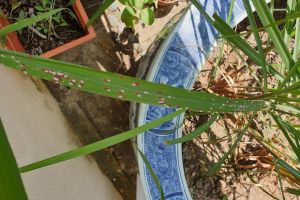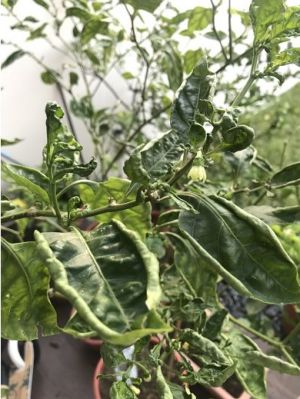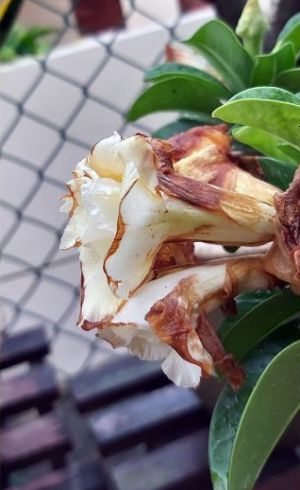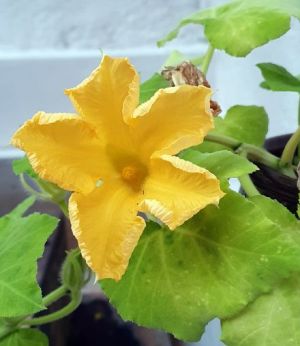Gardening FAQ #2 – What You Need To Know
Lemon grass affected by scale insects

After transplanting a lemongrass plant into a big pot more than a month ago, it grew well with four to six hours of direct sunlight from morning to 2pm. However recently it was noticed a lot of white and red spots on it. How do we treat this and prevent it from happening again?
Your lemongrass plant is likely to be infested by scale insects, which are pests that suck sap from plant tissues, hence weakening the plant over time. You can prune the affected leaves and then spray the plant with neem oil or summer oil, which are organic pesticides that work by suffocating the adult insects and killing them.
Several rounds of applications are needed to keep the pest levels low to reduce their harm to your plant. Make sure all parts of the plant are covered during the pesticide application. Also, apply the pesticide during the cooler part of the day, say, in the evening.
For suggestions on how to control another plant worst enemy, head over to our section on Weed & Moss Control.
Broad mites on chilli plant
 The leaves on my chilli plant are not growing as broad as they should and they seem to curl. Also, the flowers seem to be dropping off as though the plant is stressed. The plant was doing better than previous batches. There was at least one harvest of chillies. I prefer not to use synthetic products. I treated the plant for white flies previously. I also had some success initially with a solution of diluted wood vinegar.
The leaves on my chilli plant are not growing as broad as they should and they seem to curl. Also, the flowers seem to be dropping off as though the plant is stressed. The plant was doing better than previous batches. There was at least one harvest of chillies. I prefer not to use synthetic products. I treated the plant for white flies previously. I also had some success initially with a solution of diluted wood vinegar.
The crinkled leaves of your chilli plant indicate that there may be a broad-mite infestation.
Lime sulphur solution or neem oil may be used to control the infestation. Another alternative is to use sulphur soap solution. As for flowers falling off, you may want to check if your chilli plant is over-watered as constant wet feet can cause flowers to be aborted.
Grow your plant in a well-drained potting mix that will dry out a little before the next watering. You may also want to try to pollinate the flowers using a soft brush to help transfer pollen to promote fruit production.
You can also read our post on Best Grow Bags: Honest Reviews + Buyer’s Guide for ways to improve this situation.
Protect flowers of Desert Rose from rain
 I have several pots of Adenium Desert Rose. One plant, with yellow double-petal flowers, has been blooming regularly, but started to show brown/black patches on the edges of its blooms. I tried using malathion, neem oil and fungicide, all to no avail. The plant continues to sprout new blooms that eventually turn black. What should I do to save it?
I have several pots of Adenium Desert Rose. One plant, with yellow double-petal flowers, has been blooming regularly, but started to show brown/black patches on the edges of its blooms. I tried using malathion, neem oil and fungicide, all to no avail. The plant continues to sprout new blooms that eventually turn black. What should I do to save it?
Your Desert Rose flowers appear to be infected with a fungal disease. It is often seen in plants grown in exposed conditions.
You may want to protect your flowering plants from heavy rain by growing them under a clear shelter that allows sunlight to pass through, but protects them from the rain.
Heavy rain or a strong jet of water can damage flowers and damaged tissues will allow fungal spores and other pathogens to enter and lead to infection.
An alternative you can consider is to shift them indoor and nucture them under grow lights until the heavy rain seasons are over. For more details, check out our post on Best Growing Light Fixtures And Buyer’s Guide.
Plant likely a pumpkin
 A plant sprouted in my pot and there is also a flower. What is the name of the plant?
A plant sprouted in my pot and there is also a flower. What is the name of the plant?
From the flower as well as the leaves, the plant appears to be a pumpkin. The leaves look rather yellow and it may be a sign the plant is lacking nutrients.
If it is growing in a very small pot, you can consider moving it into a larger flower pot or grow it in the ground. The soil should be well-drained and moisture-retentive. You can give the plant a balanced fertiliser to improve its health and promote vigour.